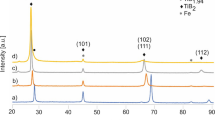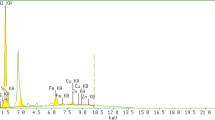Boron carbide (B4C) has been studied under dry sliding conditions for use as a potential finite-life run-in coating. Such a coating has been found to polish its mating surface during dry sliding wear, thereby providing fatigue resistance to the coated part. Employing such run-in coatings requires a complete understanding of the changes that occur in the coating abrasiveness during the polishing process. Therefore, a thorough understanding of the changes in the contact conditions of such a system needs to be obtained. This study presents the role that contact plays in changes of the overall coating abrasiveness. By performing sliding wear experiments using various contact conditions, i.e. ball-on-disc, pin-on-disc and cone-on-disc, we directly investigated the effects of macro-scale contact conditions on the coating abrasiveness. It was found that the rate at which the coating abrasiveness decreased was independent of the macro-scale contact conditions. These findings were further validated by investigating the coating abrasiveness results that were obtained by performing spiral track wear experiments. Through the use of a three-dimensional thermomechanical asperity contact model, it was found that the coating abrasiveness was controlled by the actual micro-scale contact conditions. This study supports the classic Greenwood–Williamson model, which states that the number of micro-scale contacts and the total actual area of contact remains constant for a given load.
Similar content being viewed by others
References
A. Erdemir (1992) Surface Coatings Technol. 54/55 482
W.R. Stott, Gear Technology (July/August, 1999) 35
S. Harris, G. Krauss, M. Siniawski, Q. Wang, S. Liu and Y. Ao, Wear 249 (2002)
M. Siniawski S. Harris Q. Wang S. Liu (2003) Tribol. Lett. 15 IssueID1 29 Occurrence Handle10.1023/A:1023460005836
M. Siniawski S. Harris Q. Wang (2003) Tribol. Lett. 15 IssueID4 359 Occurrence Handle10.1023/B:TRIL.0000003058.34091.fb
M. Siniawski, S. Harris, Q. Wang, Y. Chung and C. Freyman, Tribol. Lett., submitted
S.J. Harris G.G. Krauss (2001) Tribol. Lett. 10 IssueID3 187 Occurrence Handle10.1023/A:1009014524815
S.J. Harris A.M. Weiner (1998) Wear 223 31 Occurrence Handle10.1016/S0043-1648(98)00297-X
S.J. Harris A.M. Weiner W.-J. Meng (1997) Wear 211 208 Occurrence Handle10.1016/S0043-1648(97)00107-5
S.J. Harris G.G. Krauss S.J. Simko T.J. Potter R.W. Carpick R. Welbes M. Grischke (2002) Tribol. Lett. 12 IssueID1 43 Occurrence Handle10.1023/A:1013923405551
S. Liu Q. Wang (2001) ASME J. Tribol. 123 17 Occurrence Handle10.1115/1.1327585
J.A. Greenwood J.P. Williamson (1966) Proc. Roy. Soc. Lond. Ser. A 295 300
Author information
Authors and Affiliations
Corresponding author
Rights and permissions
About this article
Cite this article
Siniawski, M.T., Harris, S.J. & Wang, Q. Effects of Contact on the Abrasiveness of a Thin Boron Carbide Coating. Tribol Lett 20, 21–30 (2005). https://doi.org/10.1007/s11249-005-7789-x
Received:
Accepted:
Issue Date:
DOI: https://doi.org/10.1007/s11249-005-7789-x




